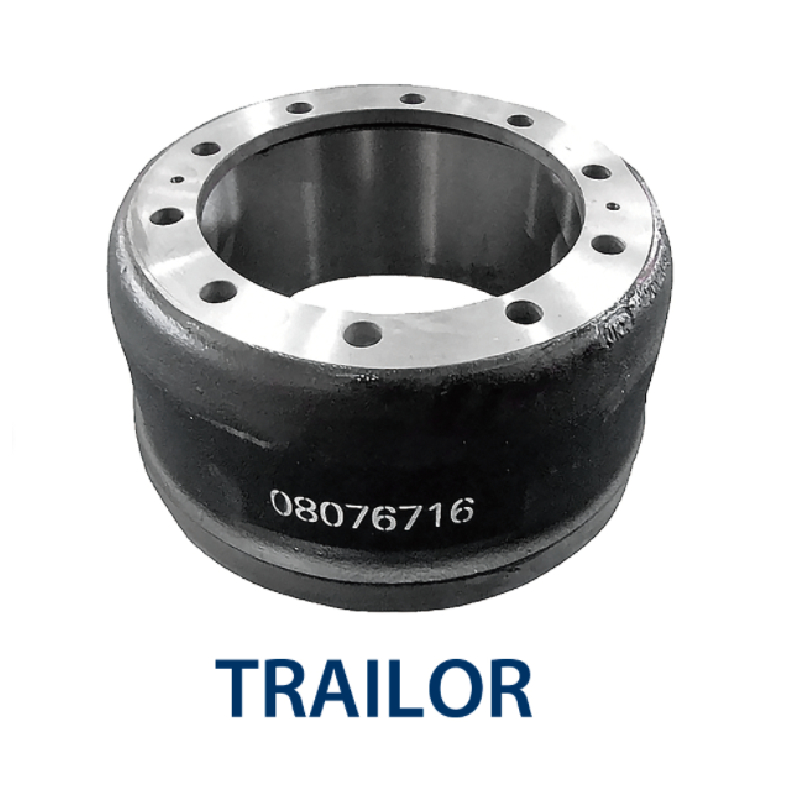Nov . 16, 2024 20:49 Back to list
how to remove seized drum brakes
How to Remove Seized Drum Brakes A Step-by-Step Guide
Removing seized drum brakes can be a challenging task for any vehicle owner or mechanic. Over time, brake drums can rust, corrode, and seize due to improper maintenance, exposure to the elements, or prolonged inactivity of the vehicle. If you're faced with the daunting task of removing seized drum brakes, this guide will walk you through the essential steps to help you do it safely and effectively.
Tools and Materials Needed
Before you begin, gather the following tools and materials
- Jack and jack stands - Lug wrench - Brake cleaner - Rust penetrant (like WD-40) - Hammer or mallet - Screwdrivers (flat and Phillips) - Tire iron or crowbar - Safety goggles and gloves
Step 1 Prepare the Vehicle
1. Safety First Ensure the vehicle is parked on a flat, stable surface. Engage the parking brake and wear safety goggles and gloves to protect yourself. 2. Loosen the Lug Nuts Using the lug wrench or tire iron, slightly loosen the lug nuts on the wheel of the seized brake drum. Do not remove them completely at this point.
3. Jack Up the Vehicle Use the jack to lift the vehicle and then secure it with jack stands. Make sure the vehicle is stable before proceeding.
Step 2 Remove the Wheel
1. Take Off the Lug Nuts Remove the loosened lug nuts completely, then take off the wheel to expose the drum.
Step 3 Inspect the Drum Brakes
1. Visual Inspection Before attempting to remove the drum, visually inspect the brake assembly for any visible damage or unusual wear. This inspection will help inform your next steps.
Step 4 Apply Rust Penetrant
1. Spray Rust Penetrant Generously apply rust penetrant around the edge of the drum where it meets the backing plate. This will help to loosen any rust or debris that may be causing the drum to seize.
how to remove seized drum brakes

2. Let It Soak Allow the rust penetrant to sit for at least 15-30 minutes to penetrate into the seized areas effectively.
Step 5 Attempt to Remove the Brake Drum
1. Use a Hammer Gently tap the outer edges of the brake drum with a hammer or mallet to help break the bond between the drum and the backing plate. Be careful not to hit too hard, as this could damage the drum or brake components.
2. Leverage with a Crowbar If the drum still won't budge, use a tire iron or a crowbar to create leverage. Insert it behind the drum and carefully pry upward. Apply even pressure without forcing it too hard, watching for any signs of movement.
Step 6 Use Brake Adjusters (If Applicable)
1. Locate the Adjuster If your drum brakes are equipped with an adjuster mechanism, locate it and turn it to retract the brake shoes.
2. Reattempt Drum Removal After adjusting, try pulling the drum off once again. The shoes should be further from the drum, allowing for easier removal.
Step 7 Final Removal
1. Pull the Drum Off With all these methods applied, you should be able to slide the drum off the hub. If it remains stuck, repeat the process with rust penetrant and tapping.
Step 8 Clean and Inspect
1. Clean the Area Once the drum is removed, clean the area thoroughly with brake cleaner to remove any dust, dirt, or rust.
2. Inspect Components Check the brake shoes and hardware for wear and replace any damaged parts as necessary.
Conclusion
Removing seized drum brakes requires patience and the right technique. By following these steps and utilizing the appropriate tools, you can successfully remove the drum without damaging other components. Regular maintenance and periodic inspections of your brake system will help prevent seizing in the future, ensuring your vehicle remains safe and reliable. If you find yourself struggling, don’t hesitate to seek professional assistance to ensure the job is completed correctly.
-
Your Brake Drum Man: Quality & Performance Parts
NewsAug.21,2025
-
Explore Japan: Ultimate Travel Guide & Authentic Experiences
NewsAug.19,2025
-
Your Brake Drum Man: Premium & Reliable Brake Drums for Sale
NewsAug.18,2025
-
ROR Web Development: Build Fast, Scalable, Secure Apps
NewsAug.17,2025
-
Scania Brake Drums: OEM Quality for Optimal Safety & Durability
NewsAug.16,2025
-
R.V.I: Advanced Remote Visual Inspection for Precision
NewsAug.15,2025
